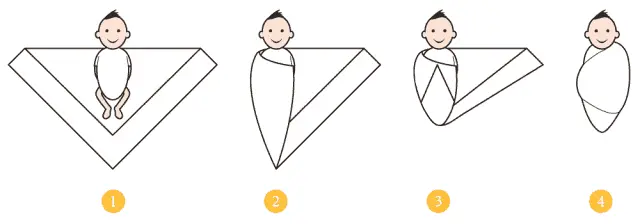Every baby is different. Some sleep through the night from the start making their parents very lucky, and others won’t sleep more than an hour or two at a time until they’re far older. There is no way to force a baby to sleep through the night and trying will only make your sleepless experience far more stressful, but there are some ways you can help your baby sleep better.
The problem…
The average newborn sleeps on average sixteen amazing hours a day, and the average newborn’s parents still end up sleep deprived. This is because babies are not born with the ability to tell night from day. On top of this, your baby also has a tiny stomach to match that tiny body, which causes them to need to eat far more frequently than an adult. The combined effect of these two facts is that few young babies can sleep more than three to four hours at once let alone sleep through the night.
The solution…
This simple step-by-step how guide on how to get a baby to sleep through the night will share with you methods to end the madness, and hopefully help you get some much needed sleep.
Establishing routine:
Before your baby’s body even knows what sleep schedule is, you can help him/her develop one by establishing routine. Remember to be flexible as newborn scheduling is difficult. Simply try to get a loose schedule started. Once your baby is around three months he/she will begin to naturally develop a sleep schedule and sleep for longer and longer stretches of time, so for now just work on keeping naps, feedings and bed time around the same time each day.
An example of a Night Time Routine:
Start with something to burn energy a few hours before beginning your actual bed time routine. For example, in infants, use tummy time or in older babies just engage them in active play. Your aim is to wear them out.
Follow this by bed time rituals such as a warm bath, getting jammies on, brushing teeth, etc. the things that should be done before bed in accordance with age.
Finally, introduce a comforting cool-down activity– read a book, sing a lullaby, breast feed. Whatever it is you find particularly calms down and comforts your baby.
Once your baby has completed your night time routine, he/she should be calm and in their own bed unless you have chosen to co-sleep. To help your baby know night time is for sleeping and day time is for being awake, you should keep your baby’s room or sleeping area dark. Avoid engaging your baby once you have put him/her down to bed.
How to actually put a baby to sleep is a manner of debate. You as a parent will need to find which way works best for you. Two of the most commonly used methods will be covered here.
Cry-It Out or Self Sooth Method:
This method is done as follows:
Place your baby in his/her bed/crib while still awake.
Say good-night, give hugs and kisses etc. and leave the room.
If your baby cries allow him/her to do so for 3 minutes.
Return and offer comfort, but don’t pick your baby up then leave again.
Let your baby cry 5 more minutes then return again.
Continue this process extending the time you wait before returning 2-5 minutes each time.
The idea is eventually your child will go to sleep and learn to self-soothe falling asleep without assistance.
The No-Cry Method or Parent Soothed:
This method has no real structure. You can offer any form of soothing to get your baby to sleep. This includes nursing, feeding, rocking, co-sleeping, singing, etc. The idea is that your child will form positive sleep associations and want to sleep.
The final step is to get your baby to sleep though the night. There are many things parents claim help babies sleep sounder and longer. Some of these things may work for you others may not.
Swaddling:
Swaddling has actually been proven to help most infants sleep longer. It’s a method of wrapping your baby in cloth or blankets that simulates the womb. I do have a full guide on how to swaddle here on Life with Gremlins. Note, however, some infants become so upset at being restrained they won’t calm down to go to sleep.
A full belly:
Many parents swear by a bit of infant cereal added to a bottle before bed to help keep your baby full longer. (Keep in mind cereal should not be given before four months of age.) Formula is also known to keep a baby full longer than breast milk. Either way, a good long feeding of nice warm milk will help your baby relax, fall asleep, and possibly sleep longer. This method has not been proven.
A good environment:
Another method to help babies sleep through the night is to make their room as much like the womb as possible. Keep the room dark and warm, but not hot. Consider playing white noise or soothing repetitive music. You can also leave an item of yours behind if you’re not co-sleeping, like a breast pad or night shirt to help your baby feel comfortable.
Make your baby as comfortable as possible:
Make any adjustments for comfort that may be necessary. Clean nose buggers, change diapers, give any medicines, for example, for teething, and make sure night clothes are soft and breathable.
Over all getting a baby to sleep through the night is no different than keeping yourself sleeping through the night, once their body is capable of doing so. Just offer routine, comfort, and opportunity.




